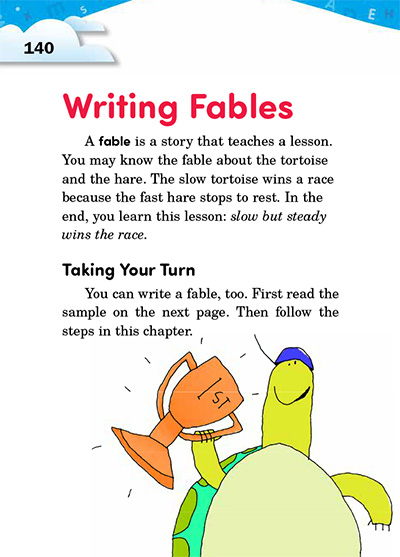Page 140 from

Start-Up Activity
Bring in a book of Aesop's Fables, and read a few favorites out loud. Ask students about fables:
- Who are the main characters in fables? (Animals)
- What comes at the end of a fable? (A moral)
- What does a moral do? (It shares an important lesson.)
- Why have people told fables for thousands of years? (They help others learn about life.)
Tell student that they will soon become wise storytellers who can help their readers learn about life.
Think About It
“Fact tells us about one man, and fable tells us about a million men.”
—G. K. Chesterton

Start-Up Activity
Bring in a book of Aesop's Fables, and read a few favorites out loud. Ask students about fables:
- Who are the main characters in fables? (Animals)
- What comes at the end of a fable? (A moral)
- What does a moral do? (It shares an important lesson.)
- Why have people told fables for thousands of years? (They help others learn about life.)
Tell student that they will soon become wise storytellers who can help their readers learn about life.
Think About It
“Fact tells us about one man, and fable tells us about a million men.”
—G. K. Chesterton